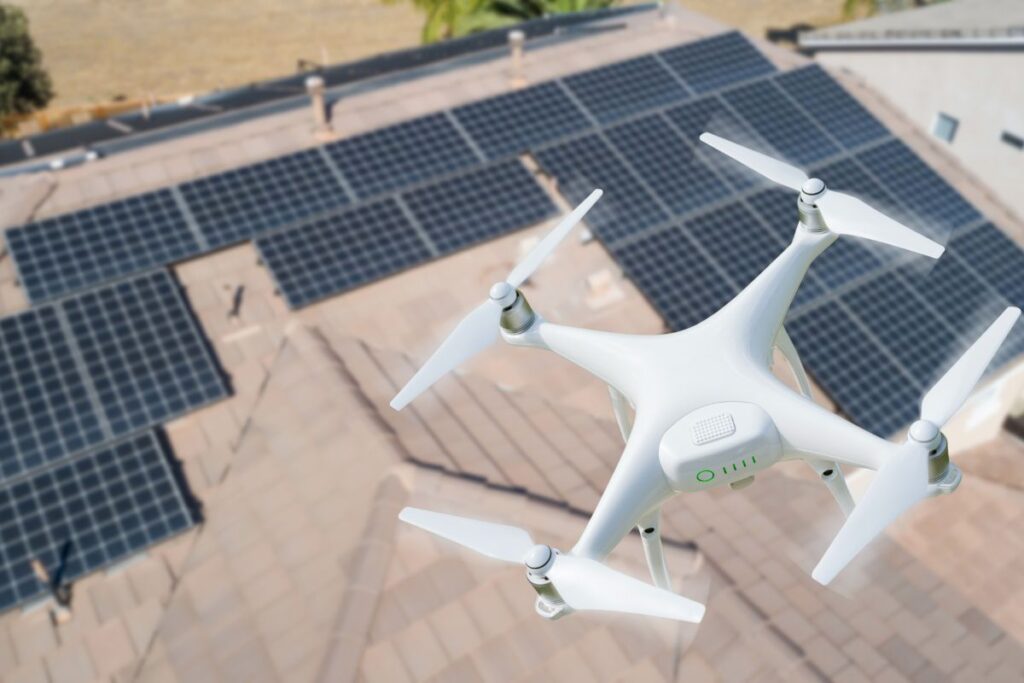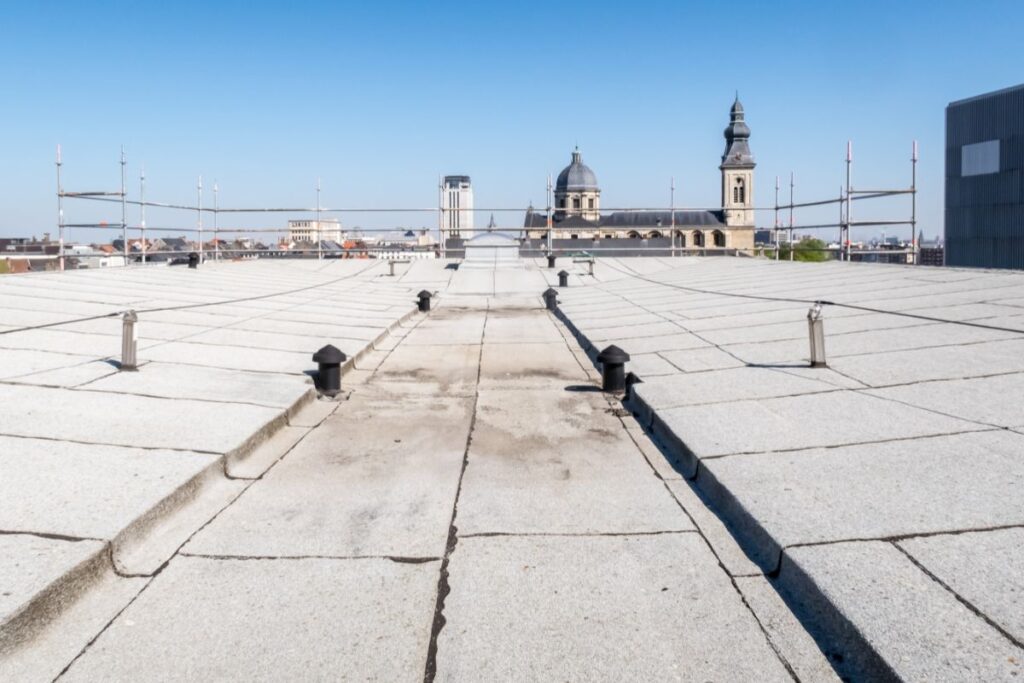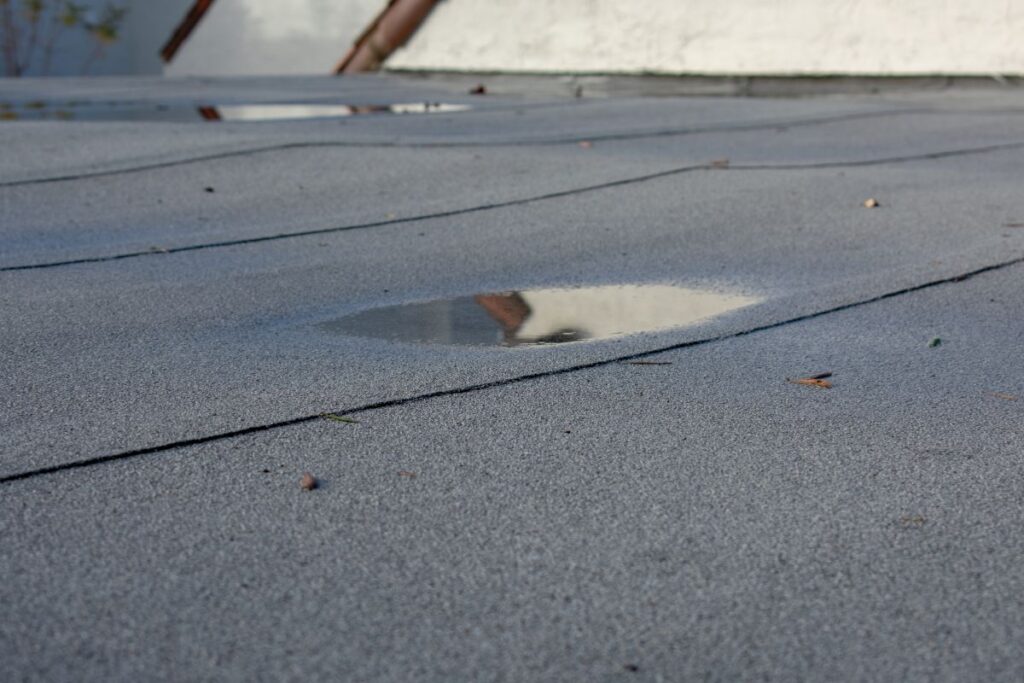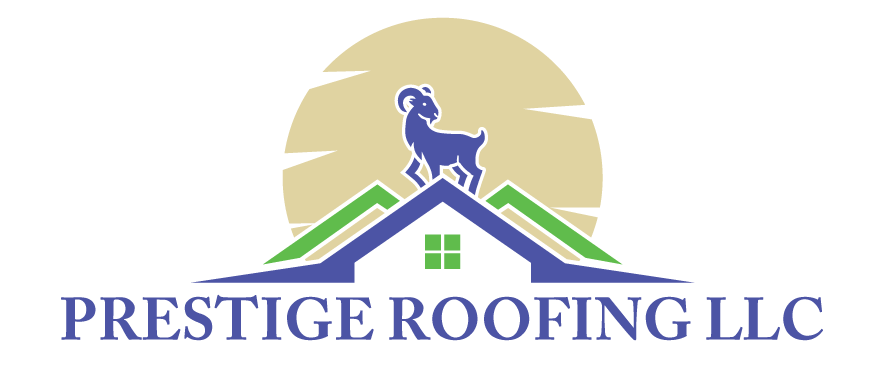If you own or manage a commercial property, you know how easy it is to overlook the roof until there’s a leak, backup, or repair bill that blows your budget. That’s where consistent commercial roof maintenance makes all the difference. It’s not just about preventing damage, it’s about protecting your investment, keeping operations smooth, and avoiding surprise downtime.
Our crew at Prestige Roofing LLC has helped businesses across Wisconsin stay ahead of expensive repairs with practical maintenance strategies that work. Whether you’re managing a warehouse, a retail center, or a multi-tenant office building, these tips will help you keep your flat roof in top shape all year long.
Why Commercial Roof Maintenance Matters
As the owner or manager of a commercial building, you already know how expensive roof problems can get. A small issue like a clogged drain or cracked flashing can quickly turn into water damage, insulation failure, or even a total roof replacement, none of which are cheap or fast to fix.
That’s why commercial roof maintenance matters. Keeping up with inspections and simple fixes helps you avoid downtime, protect the building’s structure, and extend the life of your roof. Whether you’re running a warehouse, office, retail space, or farm, the benefits of commercial roof maintenance are the same: fewer headaches, lower costs, and less stress down the line.
7 Commercial Roof Maintenance Tips
When it comes to commercial roofs, there’s a clear difference between what works and what leads to costly damage. In this section, we’ll break down commercial roof maintenance tips professionals rely on to keep buildings watertight, worry-free, and built to last.
1. Do Regular Roof Inspections

One of the simplest ways to avoid major headaches is to get in the habit of inspecting your commercial roof twice a year: once in the spring and once in the fall. You’ll want to look for obvious signs of trouble like cracks, standing water, blistering, or loose seams. After a major storm, it’s also smart to check for debris or damage that might have occurred during the harsh weather.
It’s generally recommended to have a professional perform a full commercial roof inspection at least once a year. They’re trained to spot the subtle signs you might miss and can offer maintenance services to fix small issues before they snowball into major repairs. Whether you manage a small office or a massive warehouse, regular commercial roofing maintenance is key to extending your roof’s life.
2. Clear Leaves, Trash, & Debris
Flat roofs attract all kinds of buildup like leaves, branches, dirt, and even trash. Left alone, this debris can clog drains, trap moisture, and lead to moss or weed growth. Over time, that buildup puts unnecessary strain on your roofing system and can even cause leaks.
If you’re responsible for flat roof maintenance on a commercial property, keeping the surface clean should be at the top of your checklist. Windy areas like farms or airports may need more frequent cleanups since they collect debris faster. A clear roof is a healthy roof and it makes every other maintenance task easier.
3. Check Drains and Gutters

Your roof’s drainage system does a lot of heavy lifting on commercial buildings with wide, flat surfaces. When drains, scuppers, or downspouts get clogged, water can’t flow properly, leading to overflow or ponding. That’s when leaks and structural stress start creeping in.
As part of any solid commercial roof maintenance plan, make it a habit to clean all drainage points at least twice a year. For buildings surrounded by trees or exposed to seasonal debris, even more frequent checks might be needed. Staying ahead of clogs is one of the simplest ways to protect your investment.
4. Watch for Ponding Water

If you see standing water on your flat roof that sticks around for more than a day or two, it’s a red flag. Ponding water adds weight, strains your roof system, and can lead to leaks, algae growth, or even structural damage if left unchecked.
In a pinch, you can use a broom or squeegee to gently guide water toward the nearest drain as long as it’s safe to do so. But that’s just a temporary fix. The real solution lies in identifying the root cause, whether it’s a clogged drain, sagging insulation, or an issue with the roof’s pitch. When it comes to commercial flat roof maintenance, spotting early signs of ponding can save building owners thousands. Keep an eye out, and don’t wait until the damage is done.
5. Inspect Flashing and Seals
Flashing might not grab your attention like a roof leak, but it’s one of the most common problem areas seen during commercial roof maintenance. Check around vents, skylights, HVAC units, and anywhere else the roof surface is interrupted. These penetrations are sealed with flashing or caulk, and over time, that material can crack, rust, or lift.
Buildings like barns, warehouses, and large commercial facilities often have more rooftop equipment, which means more flashing to monitor. Don’t overlook it. If you spot cracked sealant, loose metal, or separation around edges, it’s time to reseal or replace those spots before water finds its way in. Flashing checks should be included in every commercial roof maintenance service, as one small gap can cause a lot of internal damage if left alone.
6. Repair Small Cracks Early
Tiny cracks and blisters in your roof’s surface might not seem like a big deal but they’re warning signs. Whether it’s a pinhole in a membrane or a small split at a seam, those early issues can quickly grow into costly leaks if left alone.
If you’ve got a metal roof, add rust spots and loose screws to your checklist. Temperature swings can loosen fasteners and widen gaps around seams, especially on older buildings. Don’t wait for water to make its way inside. If you spot a problem, patch it up immediately. Staying on top of commercial roof maintenance and repair keeps your system watertight and extends its lifespan.
7. Limit Roof Traffic & Protect Surface
Flat roofs aren’t made to be walked on like a sidewalk. Excessive foot traffic mainly around HVAC units or service areas can wear down the roof membrane, lead to punctures, and shorten your roof’s life. Professionals usually recommend using walkway pads in high-traffic zones to protect the surface from boots, dropped tools, or sharp equipment.
If your building relies on regular rooftop servicing, a commercial roof maintenance program should include training staff or service crews on how to move carefully across the roof. A little prevention goes a long way in protecting your investment and avoiding premature wear.
Bonus Tip: Look Inside & Improve Ventilation
Not all roof problems show up outside. Sometimes, the first signs are inside like ceiling stains, soggy insulation, or a musty smell of mold. These are all red flags that your flat roof may be letting moisture in.
For barns or agricultural buildings, this matters even more. Animals create a ton of moisture, and without proper ventilation, humid air can build up and lead to interior condensation and rot. Ridge vents, cupolas, or powered fans help let that warm air out and keep your building dry from the inside out.
This kind of preventative commercial roof maintenance doesn’t just protect your roof, it protects everything underneath it. And that’s one of the biggest long-term benefits of commercial roof maintenance.
Know When to Call the Roofing Company
Some jobs aren’t worth DIY-ing when it comes to persistent leaks, sagging spots, or signs of storm damage. If something looks or feels off, it’s time to bring in a commercial roof maintenance company that knows what to look for.
As mentioned above, scheduling a professional inspection at least once a year is recommended. A trained roofer can spot even the smallest issues before they turn into expensive repairs, and they’ll know exactly how to fix them safely and efficiently. So if you’ve been seeing signs of leaks, debris buildup, or ventilation issues, consider this your sign to reach out to a professional.
Need Commercial Roof Maintenance in Wisconsin?
If you’re a Wisconsin business owner or property manager, Prestige Roofing LLC is your go-to team for expert commercial roof maintenance. We handle all types of flat roof systems and offer tailored maintenance programs that keep your roof in top shape year-round.
From annual inspections to preventative repairs, our crew helps you avoid damage and extend your roof’s lifespan. Let’s make sure your building stays dry, safe, and efficient.
Call (920) 791-0414 today to schedule your free consultation or ask about our annual maintenance contracts. We’ve got your roof covered.

